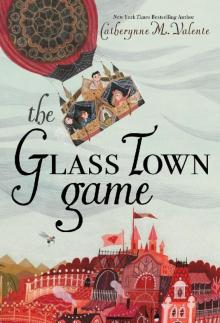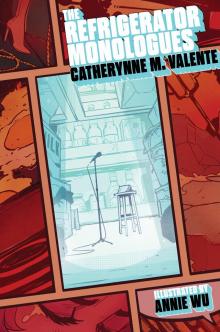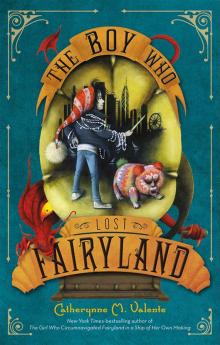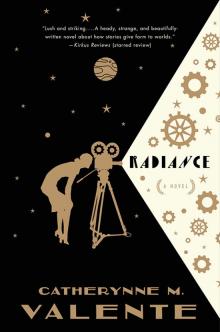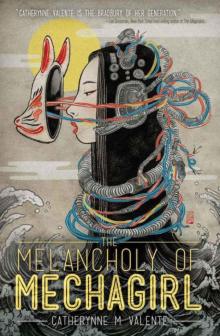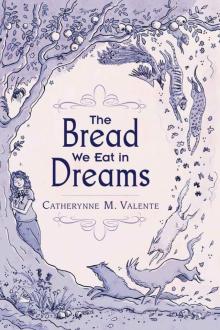


Cairo, Page 36
Max Rodenbeck
Umm Kulsoum was more than a great diva. To her generation she became the embodiment of an Arab cultural renaissance. Fusing classical training and folk sensibility with Cairo’s polished urban forms, she pulled together the strands of a common identity that had been torn apart by colonialism. With her haughty demeanor undercut by a razor wit, and with her long-sleeved, high-necked gowns and trademark handkerchief and dark glasses, Umm Kulsoum’s persona suggested a blending of Western style with Eastern modesty. Illiterate listeners found they could respond to the classical poems she sang. Educated critics raved at the subtlety she could bring to simple, colloquial lyrics. In the 1940s her aching rendition of the words “Mere wishes do not gain demands / The world is won by struggle alone” seemed to express the very soul of Egypt crying for an end to British domination. When, in the 1960s, her voice trembled at the phrase from “Al-Atlal’ ” “Give me my freedom / Let loose my hands,” her emotion evoked a range of longings, from the Palestinian yearning for nationhood to the demands of Arab women for equal rights.
UMM KULSOUM was the brightest star in Cairo’s musical firmament, but she was not the only one. Other talents added to the city’s luster: the innovative rhythms and orchestration of prolific singer-composer Muhammad Abd al-Wahab, the slick virtuosity of Syrian-born Farid al-Atrash, the honeyed smoothness of teen idol Abd al-Halim Hafez. Before 1970 there was quite simply no Arab entertainer who approached any of them in popularity.
In fact, rivals could not hope to compete. No place but Cairo had the means to transform talent into legendary fame. In 1950 the rest of the Arab world had produced a total of ten feature films. This city alone had turned out more than 300—with many reaching technical standards that matched the best European productions. From the 1940s to the 1960s Cairo studios were rolling out 50 films a year. Their musicals and steamy romances, stark melodramas and slapstick comedies entranced audiences that were still largely immersed in folklore. Egyptian directors’ treatment of subjects such as adultery, misogyny, and homosexuality reflected a confidence in the need to prod and entice their Arab cousins into modernity. The glamorous settings of Cairo’s celluloid world, the sleek Buicks and Cadillacs cruising avenues tinseled with neon and spangled with movie stars, projected an urban polish that was both tantalizing and disturbing. Very disturbing to some: when the 1941 hit Intisar al Shabab (“The Triumph of Youth”) was shown in southern Syria, Druze tribesmen fired their rifles at the screen. They were shocked to see the green-eyed star Ismahan, who happened to come from a noble Druze family, appear in makeup and nylon stockings.
The images of more than 2,000 Cairo-produced films form a collective Arab vision of the city. The stock sets of its studios are more familiar even than the Main Streets and mean streets of Hollywood: the grand staircase in the pasha’s mansion where heroines swoon; the hāra in the Old City where doe-eyed maidens lower shopping baskets from balconies; the Pyramids Road nightclub where sequined dancers gyrate among tables of drunken admirers. Cairo is a pervasive cultural reference point: in Tunis, someone jokingly told me a friend should be sent to La Mannouba. “That’s our Abbasiyya,” he explained, referring to the district—mentioned often in Egyptian movie farces—where Cairo’s equivalent of Bedlam or Bellevue is located.
These days critics complain of a decline in quality, yet the city still turns out three times more films than all other Arab countries combined.*5 Two Arab satellite channels beam out Egyptian movies twenty-four hours a day. Cairo’s stars continue to dominate gossip columns across the Arab world. In the remotest Yemeni village actors such as the comic Adel Imam or the melodramatic heroine Faten Hamama are household names. And whereas competitors in Arab film can rarely export productions, because a Syrian, say, would be baffled by dialogue in Tunisian dialect, everyone picks up on even the latest Cairene slang. Factory workers in Algiers or Aleppo can quote line by line from popular productions such as the hit comedy Madrasat al Mushāghibīn (“The School of Troublemakers”), which ran for four years on the Cairo stage during the 1970s and is still broadcast regularly in television form.
YET IF CAIRO remains the cultural cockpit of the Arab world, it is largely because there is still little competition. Just as the region has no other nation-state so firmly rooted in its history and identity as Egypt, so it has no other true metropolis to match Cairo: no city so complete with trappings such as traffic jams and jazz bands, world-class opera and a rich daily choice of lurid crime stories, ballet and belly dancers, and a scintillating nightscape of lights reflecting in the Nile. Its closest rival is Beirut. But that city, whose freewheeling lifestyle once drew Arab artists and nightclubbers, has been sundered by civil war. Damascus, Baghdad, and Tunis stifle under intolerant ideologies. Their citizens would gape in wonder at the abundance of opinion flaunted on any Cairo newsstand. As for the petromonarchies of the Arabian Gulf, sparse populations and rigid religious orthodoxy limit their chance of developing a cosmopolitan culture. True, Saudi Arabia has tried to buff its image by buying up prestigious Arabic-language newspapers and satellite TV stations. But it is largely Cairene journalists and technicians who produce their content—just as graduates of Cairo’s five main universities make up half the teaching staff in the Gulf.
The fact is, however, that Cairo has never quite regained the dominance it achieved before Egypt’s defeat in the Six-Day War.
Its star waned rapidly after the disaster. The deaths, in rapid succession, of President Nasser, Abd al-Halim Hafez, Farid al-Atrash, and Umm Kulsoum left a tremendous vacuum. (At Abd al-Halim’s premature death in 1974, half a dozen heartbroken fans hurled themselves from windows in Cairo.) Economic hardship compounded the shame of military defeat. It was made all the more humiliating by the sudden oil-rush of money into the Arabian Peninsula that followed. Cairenes had long regarded the pocket emirates of the Gulf as cultural backwaters—“tribes with flags” is how a retired Egyptian diplomat dismissed them to me at the Cairo Yacht Club, with a wave of his cigar. Now, in the aftermath of defeat, the proud people of Cairo were forced to turn to their neighbors for jobs, finance, and even for charity.
Cairo’s cultural wealth seemed suddenly exhausted. The collapse of Nasser’s pan-Arabist and socialist ideals wrecked the city’s self-confidence. It ushered in a period of questioning and self-disgust. “The failure of Nasser’s revolutionary project was a terrible disappointment,” says Ahmad Abd al-Mu‘ati Higazi, Cairo’s most distinguished contemporary poet. “Intellectuals had been swept up in it, had sacrificed their independence of thought in the belief that freedom for all should come before individual freedom, even for those who were particularly gifted….This was how cultural life declined. Many of our best writers and artists emigrated.”
Through the 1970s and ’80s Cairo stumbled. Its creative class, pampered under Nasser (when not imprisoned), was now held in contempt by an increasingly materialistic, and increasingly religion-bound, society. New generations of artists found themselves hemmed in by convention and encumbered with the legacy of former glory. They waxed nostalgic not just about the old films and songs but also about the whole cozy, coddled world that was fast disappearing. The city’s great literary cafés died out. Fishawi in the Old City, with its huge gilt mirrors and stuffed crocodile and bustling profusion of hawkers, shoeshiners, and fortune-tellers, became a hangout for the tourist sandal brigade. The Café Riche downtown, with its mix of leftist conspirators and the secret police who surveilled them, closed because of a dispute over inheritance. The monastically airy Cecil Bar in Tawfiqiyya was converted into a bank. Naguib Mahfouz, a famous café devotee, dropped his habit of holding court at the Urabi Café in his old neighborhood, Abbasiyya. Traffic jams had turned the weekly excursion into a tiresome chore.
The loss of morale seeped into the pores of the city. It showed even in the physical appearance of the streets. From the mid-1960s to the mid-1980s, Cairene architects produced few buildings of note. Instead, there were monuments to greed, corruption, and declining aesthetic sensibility. At Tahrir Sq
uare a neo-Islamic palace was torn down to make way for a high-rise that was never built because the owners went belly-up in a banking fraud. Similar scams left ugly skyscrapers by the Nile and the Gezira Sporting Club to molder incomplete. Riverside parks were sold to international hotel chains. Private clubs for bureaucrats, trade unions, and the army walled off most of the Nile’s banks—Cairo’s only lung for fresh air—from the common people.
In literature, no figures of stature rose to take the place of literary lions such as the short-story writer Yusuf Idris or the playwright Tawfiq al-Hakim. Serious writers turned from social realism to black farce and fantasy—a shift that alienated them further from their meager readership. Most, however, sold out to commercialism. Cairene theatergoers now had to endure ham actors clomping across the stage and occasionally tripping over their microphone cords. In music, the introduction of synthesizers and studio mixing made the city’s new music tinny, repetitive, and forgettable. It was all razzle-dazzle and unctuous crooning; all image and no content.
The same was true in film. Reliant now on finance from the Gulf, movie-makers grew beholden to their paymasters’ taste for lame farce and turgid romance. Their productions became stock vehicles for actors such as Husayn Fahmy, Egypt’s lackluster Robert Redford, and pneumatically vacuous starlets such as Nadia al-Gindi and Layla Elwi. The few films with realistic content—by struggling directors such as Muhammad Khan, Asma al-Bakri, Dawud Abd al-Sayyid, or Atif al-Tayyib—rarely so much as broke even. They portrayed Cairo accurately, but the vision was too harsh, the troubles of the characters too uniquely specific to Egypt’s capital, to have much resonance beyond the country’s borders. By the 1990s the movie industry as a whole was in steep decline.
Lack of funding and ideological drift, made worse by the state’s policy of stuffing its organs with underpaid staff, reduced many of the city’s cultural institutions to rudderless bureaucracies. At the Dar al-Kutub—the National Library, which houses the world’s largest collection of Arabic books—thousands of priceless medieval manuscripts were begrimed with the dust that gusted in through broken windows. While the city’s chain hotels built theme restaurants evoking the street life of the Old City, the Old City’s real ancient monuments, its real crafts and markets, decayed. Cairo’s faculties of fine arts, its Modern Art Museum and Cinema Institute, its academies of ballet and classical music and Oriental music—all sacrificed quality to quantity. Imitation replaced experimentation. Dinosaurs from the Nasser era clung to power in the Writers’ Union, the Press Syndicate, the Bar Association. Arabs, and Cairenes themselves, began to look elsewhere for inspiration.
The words of Umm Kulsoum’s 1964 classic “Fakkaruni” seemed to describe the state of the city’s consciousness:
They spoke to me again of you, reminded me, reminded me….
They woke the fire of longing in my heart and in my eyes….
They took me back to the past,
With its ease, with its joys and its sweetness…and its pain and harshness.
And I remembered how happy I was with you,
And O my soul I remember why we came apart….
TEN YEARS AGO the Grillon, a downtown beer garden where Cairo’s Left-Bankish riffraff schmooze late into the night, felt like a castle under siege. The smoke-laden talk swirled in a closed circle. Round and round it went, from grim tales of fresh battles lost to religious conservatives to charges of treachery within the walls. Indeed, the loudest voices were raised against the many fellow travelers—leftists and secular nationalists all—who had gone over to the enemy: had taken jobs in the Gulf and embraced the religious trend, or had joined the government’s patronage-dispensing National Democratic Party and scuttled off to visit Israel, that paramount pariah of Cairene intellectuals.
The talk was not just the rankling of boozy malcontents. Petty rivalries over small pickings aside, there was a real sense that the “hellish coarseness” Lewis Awad had warned of twenty years before was indeed on the verge of snuffing out the sputtering torch of Enlightenment. Events in the wider world all pointed to looming dangers. The Iranian revolution and civil war in Algeria, continuing Israeli colonization of the Occupied Territories, the Gulf War, and the arrival of American troops on Arab land: all these developments bespoke the continuing failure of Nasser’s pan-Arab dream. Closer at hand, the Grillon crowd perceived a range of barbarians massing at the gates. Rabble-rousing, book-burning Islamists were one form. Clammy-handed bureaucrats were another. In addition, there were the corrupting influences of Gulf money and of slick advertising and Hollywood soap operas on television. Cairo’s avant-garde of intellectuals—as they saw themselves—seemed about to lose the battle for the hearts and minds of the Egyptian masses.
A decade later the Grillon’s leftist chatterers still talk of a crisis in Arab culture. They still see religious obscurantism and American hegemony as creeping twin evils. But the mood at the Grillon is both more sober and more spirited than it was. Not only have many bastions of liberalism failed to fall, but also there is a quickening sense that Cairo is on the verge of change. Or rather that the engines of cultural life are beginning to catch up with the city’s own pace of change.
If the city is indeed groping its way to a new century, there is one simple factor to be thanked: money. The rapid globalization of the world economy has forced the government to realize that to compete, Egypt must be both open to the world and attractive to private enterprise. Privatization of industries has not only revived the long-moribund Cairo Stock Exchange, it also has reawakened dormant creativity. Foreign investment and a boom in tourism have begun to generate the wealth needed to sustain the arts. New production companies are poised to pump money into the film industry. A resurgence of private patronage can be seen in the number of galleries opening and new publications launched. It shows in the appearance of a style of modern architecture that may not yet be beautiful, but whose pharaonic pomposity, angular lines, and lavishness with costly marble and granite are all recognizably Cairene.
Of course, the leftist denizens of the Grillon would be right to say that Cairo’s new rich are on the whole less interested in arts than in luxury goods. In recent years, showrooms for Rolls-Royce and Jaguar have opened for the first time since the 1952 revolution. The pages of Al-Ahram are peppered with ads for such quaint comforts as a $1,500 heated, electronically controlled, self-cleaning toilet seat (with “optional” built-in blow dryer). The bouncer at Tabasco, a trendy new bistro, has developed a lucrative sideline. He offers a valet answering service: customers park their cellphones with him, and he wades into the throng of gilded youths to alert them when they get calls.
But if Cairo supermarkets now stock imported caviar and smoked salmon, they also boast a proliferating range of locally made luxuries. Gezira Sporting Club socialites who used to return from Europe with bulging suitcases now find they can kit themselves out at home. As in eleventh-century Fustat, the city is again producing fine linens and brocades, handwoven carpets, and elegant tableware. Those who can afford to plunk down $70,000 can even buy Cairo-assembled BMWs and Mercedes.
Such extravagance may be unseemly, but it does have a trickle-down effect. Rising expectations and incomes—and the introduction of payment by installment—mean that one in seven families now owns a car or motorbike. Three-quarters have washing machines and refrigerators. Working-class Cairenes now demand quality in goods and services. More important, the attraction of decent salaries has begun to plug half a century of brain drain. In such upcoming fields as design, computer software, and finance, Cairo has begun to draw back its own skilled émigrés.
Of course, none of this can disguise the monumental scale of the city’s problems. The materialistic middle class may have grown, but so has the marginalization of the poor. The leveling hand of the state has been lifted, leaving a vacuum that is being filled only patchily by private charity. This means that the better medical treatment, housing, and education that are now available are available only to those who can afford t
hem. The majority of the city’s people still buy their clothes from pushcarts, flea markets, and bargain sales. They squeeze onto lumbering, jam-packed buses or risk the manic driving of jitney cabs because they cannot dream of affording taxi fares that would be considered rock-bottom in most cities (about 50 U.S. cents a mile), let alone the luxury of a private car. The price of bread and onions will frame the lives of all too many Cairenes for some time to come. In the new, competitive world, their handicap is all the greater.
Cairenes are also paying a price for their government’s qualified success at combating religious extremism. If the state has indeed shed some of its properties through privatization, the challenge from Islamist radicals has kept it determined not to surrender its authoritarian ways. This is bad news for Cairo. A city of this scale, with this rate of growth, needs a responsive, flexible government, not a cranky administrative machine built on loyalty to a regime that can no longer claim to represent more than the status quo. The travails caused by traffic jams, pollution, and bureaucratic obstinacy—to name only a few of the daily hurdles faced by Cairenes—are unlikely to lessen unless the people of the city are allowed to set their priorities for themselves. And by sweeping the issue of religion’s role in public life under the carpet, the government has only succeeded in muffling core debates in Egyptian society. Their outcome has been left to be determined by fate. That fate may prove to be kind, or it may be violent. What is sure is that waiting for fate to decide can only leave intellectual life in unhappy suspense.
Today’s city of 12 million inhabitants is no longer an intimate place where everyone who is anyone knows everyone else. Cairo is now a tough, impatient town. “Oh, yes, the average person is certainly better off materially than before,” says Mustafa Darwiche, a impish film critic who was twice fired from his job as state censor for being too permissive. “But the quality of life has definitely declined. We can’t afford to be so carefree anymore.”



